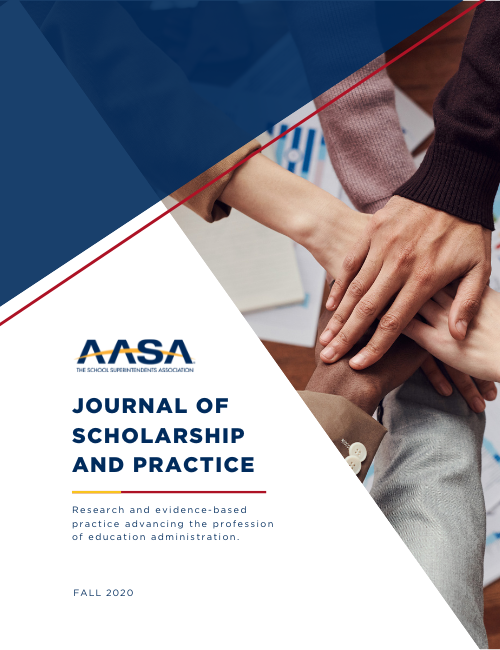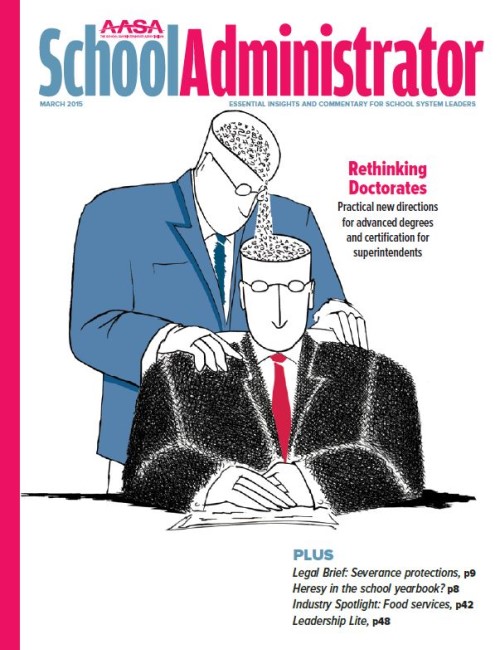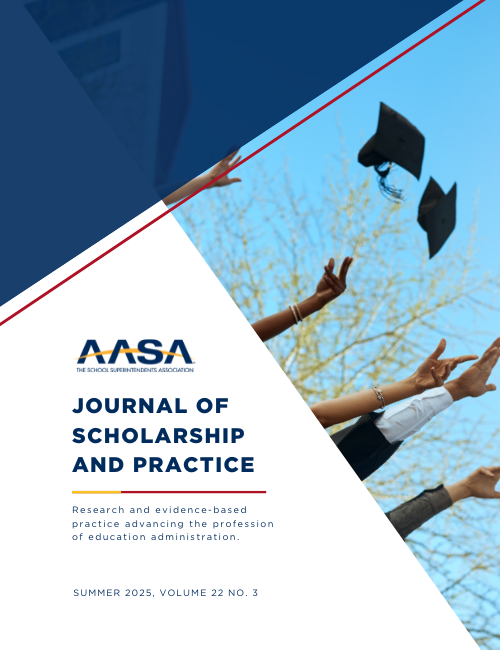2020 Fall Journal of Scholarship and Practice

This issue is a compilation of four research articles that have been assembled to look at the importance of the superintendent-principal partnership: teacher evaluation, technology implementation, student learning, and school safety and security.
Successful organizations use perspectives of both the principal and superintendent because each has the advantage of approaching the work with a different set of information. The superintendent-principal partnership is best characterized by a continual process of understanding each other's work. Such interdependence has become even more indispensable during the current COVID-19 pandemic, as the system-wide and local learning environments have become radically transformed and unfamiliar.
The issue begins with Nixon, Packard, Kimbrel, and Nhekairo's "Principals Tackle Teacher Performance," which examines barriers that challenge the principal's ability to supervise and evaluate ineffective teachers and the importance of the superintendent-principal partnership in overcoming them.
In their piece, "School Administrators' Perceptions of STEM Awareness and Resources," Watson, Cothern, and Peters explore a gap between how school principals and superintendents perceive STEM awareness and the related resources of their district. Among their findings and recommendations, the authors caution, "District and school administrators often mistakenly believe professional development designed for use in the classroom setting should be left to instructional personnel."
In "The Effect of Demographics on the Implementation of the Principal Walkthrough," Gutmore and Marx share a study of a principal's efforts to get closer to the learning through instructional walkthroughs and how these might affect student learning. The researchers warn that "Change can only occur if everyone in the school setting is receptive to change: Principals need to prove their worth as instructional leaders, and teachers need to develop a sense of trust in their principals." The researchers' ideas signal ways for superintendents to consider how to apply such an approach to district-wide learning.
The issue closes with "Superintendent Perceptions of School Safety and Arming Teachers in Public Schools in Nebraska," by Lenihan, De Jong, Aderhold, Ossian, and Robinson who study the perceptions of school superintendents regarding safety and security emergency management protocols as these pertain to arming teachers at the building level. Concerns about the safety of having trained teachers armed without understanding the responsibility of firing at an active shooter were raised by many of the superintendents in the study.
Advertisement
Additional Articles
-
Principals Tackle Teacher Performance
Principals are most likely to non-renew a teacher’s contract for incompetence or ethical violations and less likely to do so for lack of student achievement.
-
School Administrators’ Perceptions of STEM Awareness and Resources
Superintendents consistently report more positive perceptions of the STEM awareness and resources of their districts in comparison to school principals
-
The Effect of Demographics on the Implementation of the Principal Walkthrough
How school and principal demographics influence a principal’s implementation of the walkthrough process.
-
Superintendent Perceptions of School Safety and Arming Teachers in Public Schools in Nebraska
This mixed-method study examined school security and emergency management protocols in Nebraska public schools.
Advertisement
Advertisement



